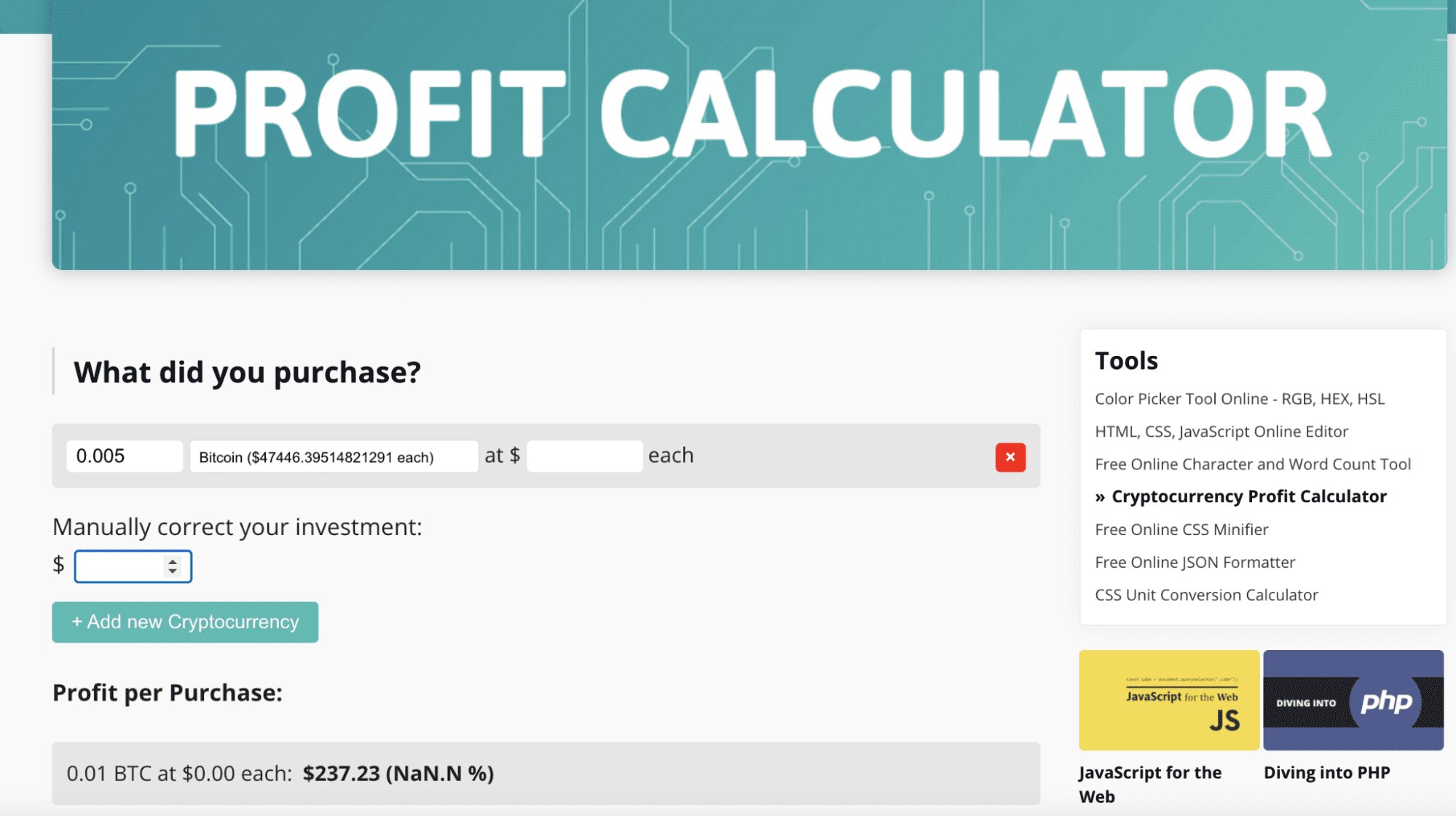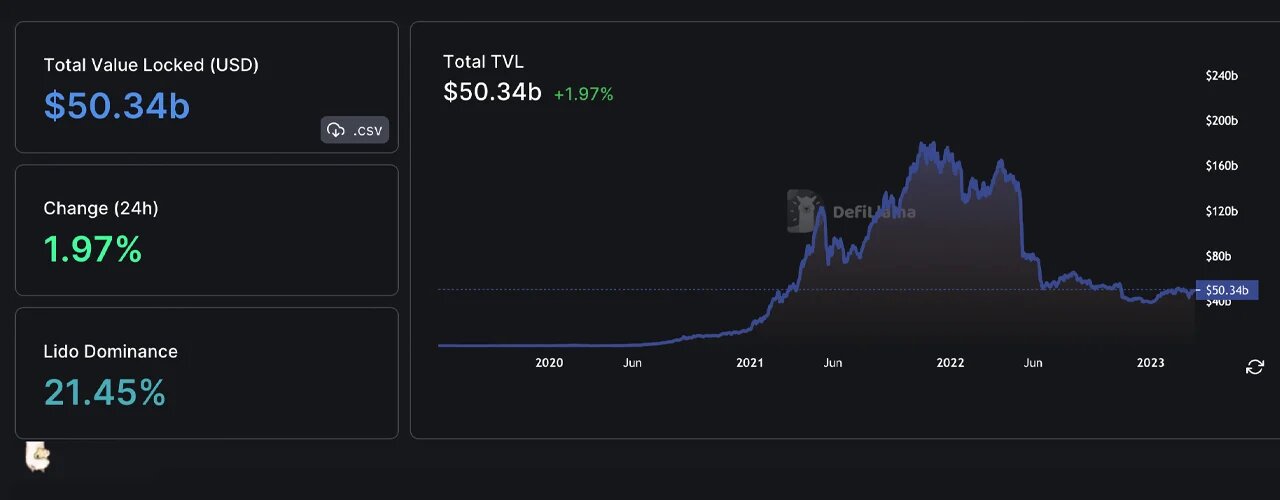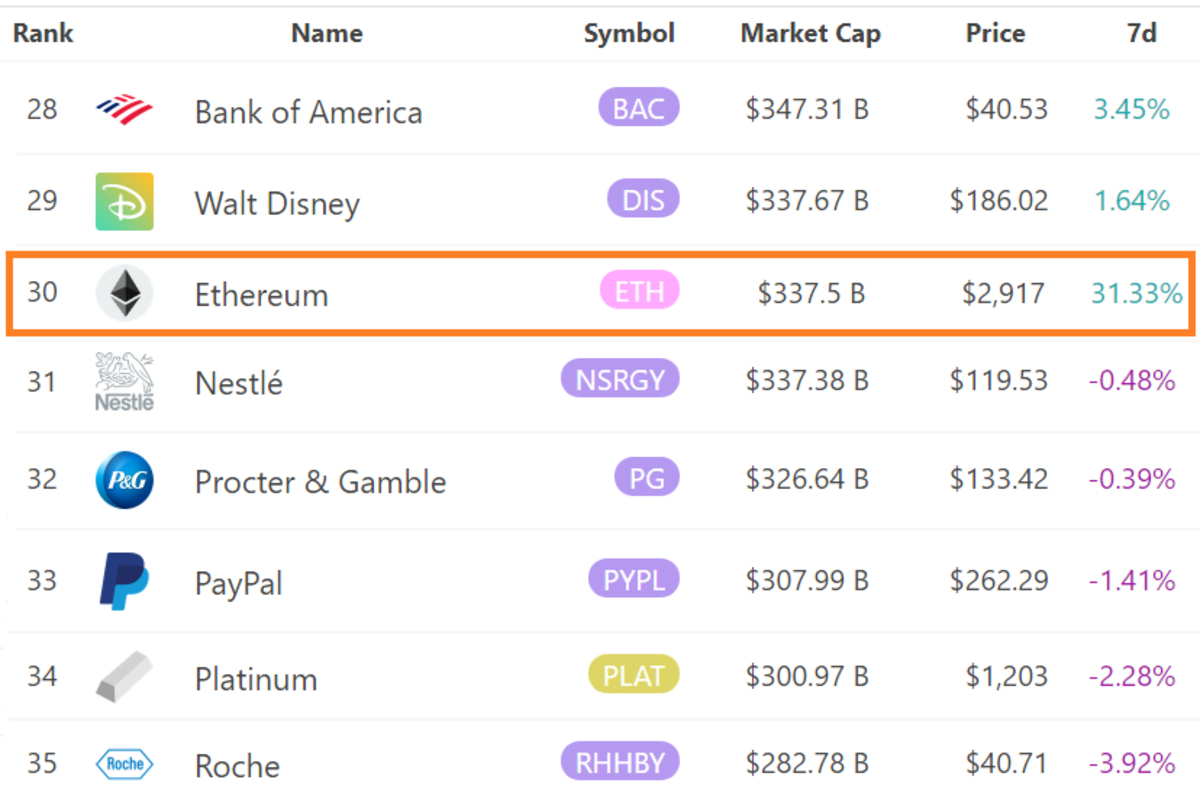Introduction
Welcome to the world of cryptocurrency, where digital assets have taken the financial market by storm. As you delve into the realm of cryptocurrencies, you will often come across the term “market cap.” Market capitalization, or market cap, is a widely used metric in the crypto space to gauge the size and value of a particular cryptocurrency.
Market cap allows investors and enthusiasts to assess the relative popularity and stability of different cryptocurrencies. It is a fundamental metric that provides insights into the overall value and growth potential of a digital asset. Understanding how to calculate market cap can help you make informed decisions when analyzing and comparing various cryptocurrencies.
In this article, we will explain what market cap is, discuss its importance in the crypto industry, and guide you on how to calculate it.
Before we proceed, it is essential to note that market cap is just one metric to consider when evaluating cryptocurrencies. Other factors, such as trading volume, project fundamentals, and technological advancements, should also be taken into account.
Now, let’s dive deeper into the world of market capitalization and harness your knowledge of this crucial metric in the world of cryptocurrencies.
What is Market Cap?
Market capitalization, often referred to as market cap, is a measure of the total value of a cryptocurrency. It represents the market value of a digital asset, calculated by multiplying the circulating supply of coins or tokens by the current price per coin or token.
Market cap is analogous to the market value of a publicly traded company in traditional finance. It provides an estimate of the overall worth and size of a cryptocurrency in the market. The larger the market cap, the greater the perceived value of the cryptocurrency.
Market cap is typically expressed in US dollars, as it is the most widely used fiat currency for valuation purposes. However, it can also be calculated in other currencies or even in Bitcoin (BTC) or Ethereum (ETH), as the value of cryptocurrencies is volatile and can fluctuate against traditional fiat currencies.
Market cap allows investors, traders, and enthusiasts to compare the relative size and importance of different cryptocurrencies. It helps in understanding the market position of a particular digital asset in relation to others and provides a quick snapshot of the asset’s prominence and popularity.
It is important to note that market cap is a dynamic metric that can change over time. As the price of a cryptocurrency fluctuates and the circulating supply is adjusted due to mining or token issuance, the market cap will also adjust accordingly.
Now that we have a basic understanding of what market cap is, let’s explore why it is such a crucial metric in the world of cryptocurrencies.
Why is Market Cap important in crypto?
Market capitalization plays a significant role in the cryptocurrency industry for several reasons:
1. Comparing cryptocurrencies: Market cap provides a standardized way to compare different cryptocurrencies. It allows investors and enthusiasts to gain insights into the relative value and popularity of various digital assets. By assessing market cap, one can quickly determine if a cryptocurrency is more or less valuable than others in the market.
2. Identifying large-cap and small-cap assets: Market cap classification helps investors categorize cryptocurrencies into different investment categories. Large-cap cryptocurrencies, with higher market caps, are considered more established and stable, often attracting institutional investors. Small-cap cryptocurrencies, with lower market caps, may offer higher growth potential but also carry higher risks.
3. Assessing market dominance: Market cap can be used to gauge a cryptocurrency’s dominance within the overall market. Cryptocurrencies with higher market caps tend to have a larger market share and influence. They often set trends and can impact the direction of the entire market. Tracking market dominance is crucial for understanding market dynamics and making informed investment decisions.
4. Monitoring growth and progress: Market cap is an essential metric for tracking the growth and progress of a cryptocurrency. As a digital asset gains popularity and its market cap increases, it indicates growing investor confidence and adoption. Conversely, a declining market cap may signal a loss of interest or concerns about the project’s viability.
5. Market cap-based indices and funds: Market cap is used to create various market indices and investment funds that track the performance of cryptocurrencies. These indices and funds allow investors to gain exposure to a diversified portfolio of cryptocurrencies based on their respective market caps.
Overall, market cap is a crucial metric that helps investors, traders, and enthusiasts gauge the value, popularity, and progress of cryptocurrencies. However, it’s important to note that market cap alone should not be the sole determinant for making investment decisions. A comprehensive analysis, considering various factors such as project fundamentals, market trends, and technological advancements, is necessary to make informed cryptocurrency investment choices.
How to calculate Market Cap of a cryptocurrency
Calculating the market capitalization of a cryptocurrency involves a simple formula:
Step 1: Find the circulating supply
The first step is to determine the circulating supply of the cryptocurrency. This refers to the total number of coins or tokens that are currently in circulation and available to the public. The circulating supply can usually be found on the project’s website, cryptocurrency exchanges, or reliable market data websites.
Step 2: Locate the current price per coin/token
The next step is to find the current price per coin or token. This can be obtained from various sources, such as cryptocurrency exchanges or market data websites. It is important to ensure that the price being used is the most recent and accurate representation of the cryptocurrency’s value.
Step 3: Multiply circulating supply by price per coin/token
Once you have the circulating supply and the price per coin or token, multiply these two values together to calculate the market capitalization. For example, if the circulating supply is 10 million and the price per coin is $1, the market cap would be $10 million.
Step 4: Market Cap calculation example
Let’s take a practical example. Suppose you want to calculate the market capitalization of a cryptocurrency with a circulating supply of 50 million coins and a current price per coin of $5. By multiplying these values, the market cap would be $250 million ($5 x 50 million).
It is important to note that the market cap may fluctuate as the price of the cryptocurrency and the circulating supply change. Therefore, it is advisable to verify the current values before calculating the market cap.
Now that you have a clear understanding of how to calculate the market capitalization of a cryptocurrency, it’s important to consider some important factors and limitations when using market cap as a metric.
Step 1: Find the circulating supply
The first step in calculating the market capitalization of a cryptocurrency is to determine its circulating supply. The circulating supply refers to the total number of coins or tokens that are currently in circulation and available for trading.
Finding the circulating supply can be done by visiting the official website of the cryptocurrency project. Many projects provide this information directly on their website or in their whitepaper. Additionally, cryptocurrency exchanges often list the circulating supply of various cryptocurrencies on their platforms.
It is important to note that the circulating supply may change over time due to factors such as mining (for cryptocurrencies that are mined) or token issuances (for cryptocurrencies that are created through token sales or initial coin offerings). Therefore, it is crucial to verify that you are using the most up-to-date and accurate information when determining the circulating supply.
When researching the circulating supply, it is also essential to consider factors such as token burns or token lock-ups. Token burns refer to the intentional destruction or removal of a certain number of tokens from circulation, reducing the total supply. Token lock-ups involve the temporary restriction of a portion of the circulating supply, usually to maintain price stability or incentivize long-term holding.
In some cases, cryptocurrencies may have a maximum supply, which means that there is a predetermined limit to the number of coins or tokens that can ever be created. This can have an impact on the perceived scarcity of the cryptocurrency and consequently its market value.
It is important to gather accurate and reliable information on the circulating supply, as errors or inaccuracies can significantly affect the calculation of the market capitalization. Research multiple credible sources and cross-reference the data to ensure the accuracy of the circulating supply figure.
Once you have obtained the circulating supply, it’s time to move on to the next step and calculate the market cap of the cryptocurrency.
Step 2: Locate the current price per coin/token
After determining the circulating supply of a cryptocurrency, the next step in calculating its market capitalization is to find the current price per coin or token. The price per coin is the value of a single unit of the cryptocurrency in a specific currency, typically in US dollars.
There are several reliable sources to obtain the current price per coin or token. The most common source is cryptocurrency exchanges. These platforms facilitate the buying and selling of cryptocurrencies and provide real-time market data, including the current trading price for each cryptocurrency. Popular cryptocurrency exchanges such as Binance, Coinbase, and Kraken can be used to check the price per coin of a specific cryptocurrency.
In addition to exchanges, there are also market data websites that aggregate price data from multiple exchanges. CoinMarketCap and CoinGecko are popular examples of such websites, providing comprehensive market information, including the current price per coin for a wide range of cryptocurrencies.
When locating the current price per coin, it is important to consider the trading pair being used. Cryptocurrencies are often traded against various base currencies, such as Bitcoin (BTC), Ethereum (ETH), or US dollars (USD). Depending on the desired trading pair, the price per coin may vary. Ensure that you are referencing the correct trading pair to obtain an accurate price per coin or token.
It should be noted that the cryptocurrency market is highly volatile, and prices can fluctuate rapidly. Therefore, it is crucial to use the most up-to-date price information available at the time of calculating the market capitalization.
When researching the price per coin, it is also helpful to consider the trading volume of the cryptocurrency. Trading volume represents the total amount of a cryptocurrency being bought and sold over a specific period. Higher trading volumes usually indicate a more liquid market and can contribute to price stability.
Once you have located the current price per coin or token, you are ready to move on to the next step and multiply it by the circulating supply to calculate the market capitalization of the cryptocurrency.
Step 3: Multiply circulating supply by price per coin/token
After obtaining the circulating supply and current price per coin or token, the next step in calculating the market capitalization of a cryptocurrency is to multiply the two values together. This simple calculation allows you to determine the total value of the cryptocurrency in the market.
Start by taking the circulating supply, which represents the number of coins or tokens currently in circulation and available to the public. This information can usually be found on the official website of the cryptocurrency project or on reputable market data websites.
Next, locate the current price per coin or token, which represents the value of a single unit of the cryptocurrency in a specific currency, such as US dollars. This information can be obtained from cryptocurrency exchanges or market data websites that provide real-time trading prices.
To calculate the market capitalization, simply multiply the circulating supply by the price per coin or token. For example, if the circulating supply is 10 million coins and the price per coin is $1, the market capitalization would be $10 million (10 million x $1).
It is important to note that market capitalization is typically expressed in US dollars, as it is the most widely used fiat currency for valuation purposes. However, you can also calculate the market cap in other currencies, such as euros, or even in Bitcoin (BTC) or Ethereum (ETH). Keep in mind that the value of cryptocurrencies is volatile and can fluctuate against traditional fiat currencies.
Remember to use the most up-to-date values for the circulating supply and the price per coin or token when performing the calculation. Prices and market conditions can change rapidly in the cryptocurrency market, so ensure that you have the most accurate and current data available.
By multiplying the circulating supply by the price per coin or token, you can determine the market capitalization of a cryptocurrency. This metric provides insights into the size, value, and market position of the cryptocurrency relative to others. However, it is important to consider some important considerations and limitations when using market cap as a metric for evaluating cryptocurrencies.
Step 4: Market Cap calculation example
To better understand how to calculate market capitalization, let’s go through a practical example:
Suppose we want to calculate the market cap of a hypothetical cryptocurrency called “ABC Coin.” The circulating supply of ABC Coin is 50 million coins, and the current price per coin is $5.
To calculate the market cap of ABC Coin:
Market Cap = Circulating Supply x Price per Coin
Market Cap = 50 million coins x $5
Market Cap = $250 million
Based on this calculation, the market capitalization of ABC Coin is $250 million.
This means that, at the current price and circulating supply, the total value of all ABC Coin in the market is $250 million. Keep in mind that market cap can change as the price of the cryptocurrency and the circulating supply fluctuate over time.
Market capitalization provides a key metric for investors and enthusiasts to assess the size and value of a cryptocurrency relative to others. It allows for easy comparison and helps in understanding the overall market position of a cryptocurrency.
It is important to note that market cap alone should not be the sole determinant for making investment decisions. Other factors such as project fundamentals, team expertise, technology, and market trends should also be considered. Market cap is just one piece of the puzzle and should be analyzed in conjunction with other metrics and factors.
Now that you have a clear understanding of market capitalization and its calculation, it’s important to be aware of some important considerations and limitations associated with this metric.
Important considerations when calculating Market Cap
While market capitalization is a widely used metric in the cryptocurrency industry, it is essential to consider a few important factors and limitations when using this metric to evaluate cryptocurrencies:
1. Circulating supply accuracy: The accuracy of the circulating supply data is crucial for the calculation of market capitalization. It is important to ensure that the circulating supply information is reliable and up-to-date. Inaccurate or outdated circulating supply figures can lead to incorrect market cap calculations and misinterpretations of a cryptocurrency’s value.
2. Illiquid markets: Market cap calculations assume that the entire circulating supply of a cryptocurrency can be traded at the current price. However, in illiquid markets with low trading volumes, large buy or sell orders can significantly impact the price. This means that market cap may not accurately reflect the true value of a cryptocurrency if there is limited liquidity and a large portion of the circulating supply is illiquid.
3. Token distribution and ownership concentration: Market cap does not provide information on the distribution of tokens or the concentration of ownership within a cryptocurrency. Some cryptocurrencies may have a significant portion of the circulating supply held by a small number of individuals or entities. This concentration of ownership can influence the market dynamics and the long-term prospects of the cryptocurrency.
4. Market manipulation: The cryptocurrency market is susceptible to manipulation, including pump-and-dump schemes and price manipulation. Market cap calculations can be influenced by these manipulative practices, leading to inflated or distorted values. It is important to exercise caution and rely on multiple sources of information before making investment decisions based solely on market capitalization.
5. Tethered market cap: Market cap calculations are typically based on the circulating supply and the current price of a cryptocurrency. However, for stablecoins like Tether (USDT), where the value is intended to be pegged to a specific fiat currency, the market cap may not accurately reflect the underlying assets backing the stablecoin. In such cases, it is advisable to consider other metrics such as reserves or audits to evaluate the stability and reliability of the stablecoin.
It is important to consider these factors alongside market capitalization when evaluating cryptocurrencies. Market cap provides a useful snapshot of a cryptocurrency’s value and popularity, but it should not be the sole basis for making investment decisions. A comprehensive analysis that takes into account other metrics, such as trading volume, project fundamentals, team strength, and market trends, is crucial.
Now that you are aware of these important considerations, let’s discuss the limitations of market cap as a metric in the next section.
Limitations of Market Cap as a metric
While market capitalization is widely used in the cryptocurrency industry, it is important to acknowledge the limitations of this metric:
1. Incomplete picture: Market cap alone does not provide a comprehensive assessment of a cryptocurrency. It does not consider factors such as project fundamentals, team expertise, technology, community support, and future prospects. Relying solely on market cap can lead to an incomplete and potentially misleading evaluation of a cryptocurrency’s value and potential.
2. Manipulation vulnerability: Market cap can be susceptible to manipulation, especially in low-liquidity markets or with cryptocurrencies that have a small number of tokens in circulation. The price of a single large buy or sell order can significantly impact the market cap, making it volatile and susceptible to manipulation by market participants.
3. Price volatility: Cryptocurrency markets are known for their high volatility, with prices experiencing significant fluctuations within short time frames. Market cap calculations are based on the current price per coin, which can be highly volatile. This can result in misleading or unstable market capitalization figures, especially in fast-moving markets.
4. Limited comparability: Market cap comparisons are most useful when comparing cryptocurrencies within the same coin/token ecosystem or platform. However, comparing market caps across different cryptocurrency ecosystems or industries may not provide accurate insights due to varying project sizes, goals, and market dynamics.
5. Hidden circulating supply: Some cryptocurrencies may have a hidden or undisclosed portion of the circulating supply, making it challenging to accurately calculate the market cap. This lack of transparency can impact the accuracy and reliability of the market capitalization figure.
6. Unrealized/locked-up tokens: Market cap does not differentiate between tokens that are actively traded and those that are locked up or held without intentions of being traded in the near future. Tokens that are not actively traded may artificially inflate the perceived value and market cap of a cryptocurrency.
While market capitalization is a valuable metric for assessing the relative size and popularity of cryptocurrencies, it is important to consider these limitations and supplement the evaluation with other relevant factors and metrics to make well-informed decisions.
Now that you are aware of the limitations of market cap, let’s conclude with a summary of the key points discussed in this article.
Conclusion
Market capitalization is a fundamental metric used in the cryptocurrency industry to assess the size, value, and popularity of cryptocurrencies. It provides a standardized way to compare different digital assets and gain insights into their market position. By calculating market cap, investors and enthusiasts can make more informed decisions when evaluating cryptocurrencies.
In this article, we covered the process of calculating market capitalization, including finding the circulating supply, locating the current price per coin or token, and multiplying these values together. We also discussed important considerations such as the accuracy of the circulating supply, illiquid markets, token distribution, and market manipulation.
It is important to be aware of the limitations of market cap as a metric. Market capitalization alone does not provide a complete picture of a cryptocurrency’s value and potential. Other factors such as project fundamentals, team expertise, technology, and market trends should be considered alongside market cap to make well-informed investment decisions.
Remember to gather accurate and up-to-date information when calculating market cap, as the cryptocurrency market is highly volatile and subject to rapid price fluctuations. Verify circulating supply and price data from reliable sources, such as official project websites, reputable exchanges, and market data websites.
By understanding and utilizing market capitalization as a metric, you can navigate the cryptocurrency market more effectively and assess the relative value and potential of different cryptocurrencies. However, always conduct thorough research and analysis before making any investment decisions, as the cryptocurrency market is inherently risky and can be influenced by various external factors.
Now armed with the knowledge of how to calculate market cap and the important considerations surrounding this metric, you can confidently evaluate cryptocurrencies and contribute to your investment decision-making process in the dynamic world of digital assets.

























